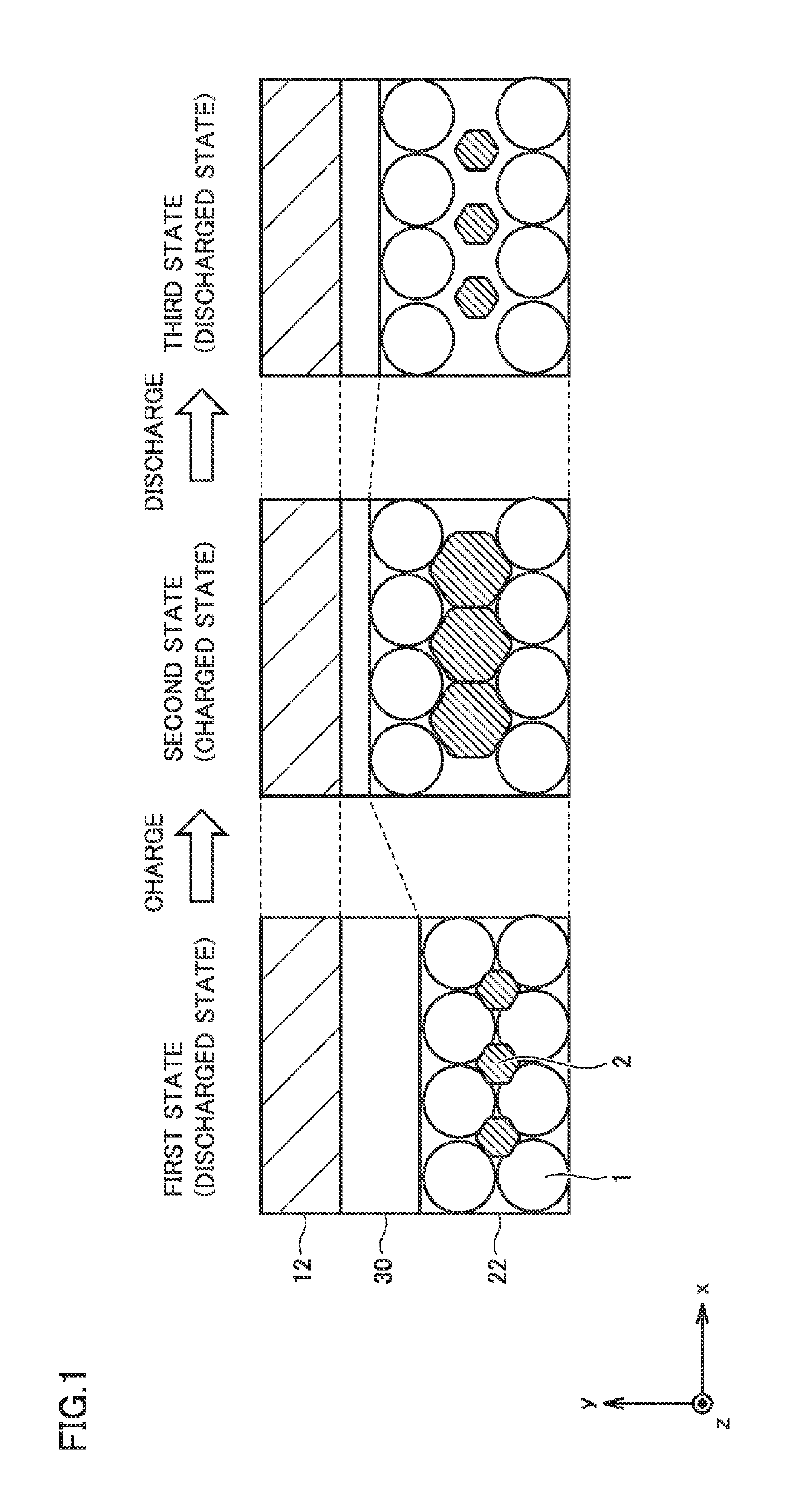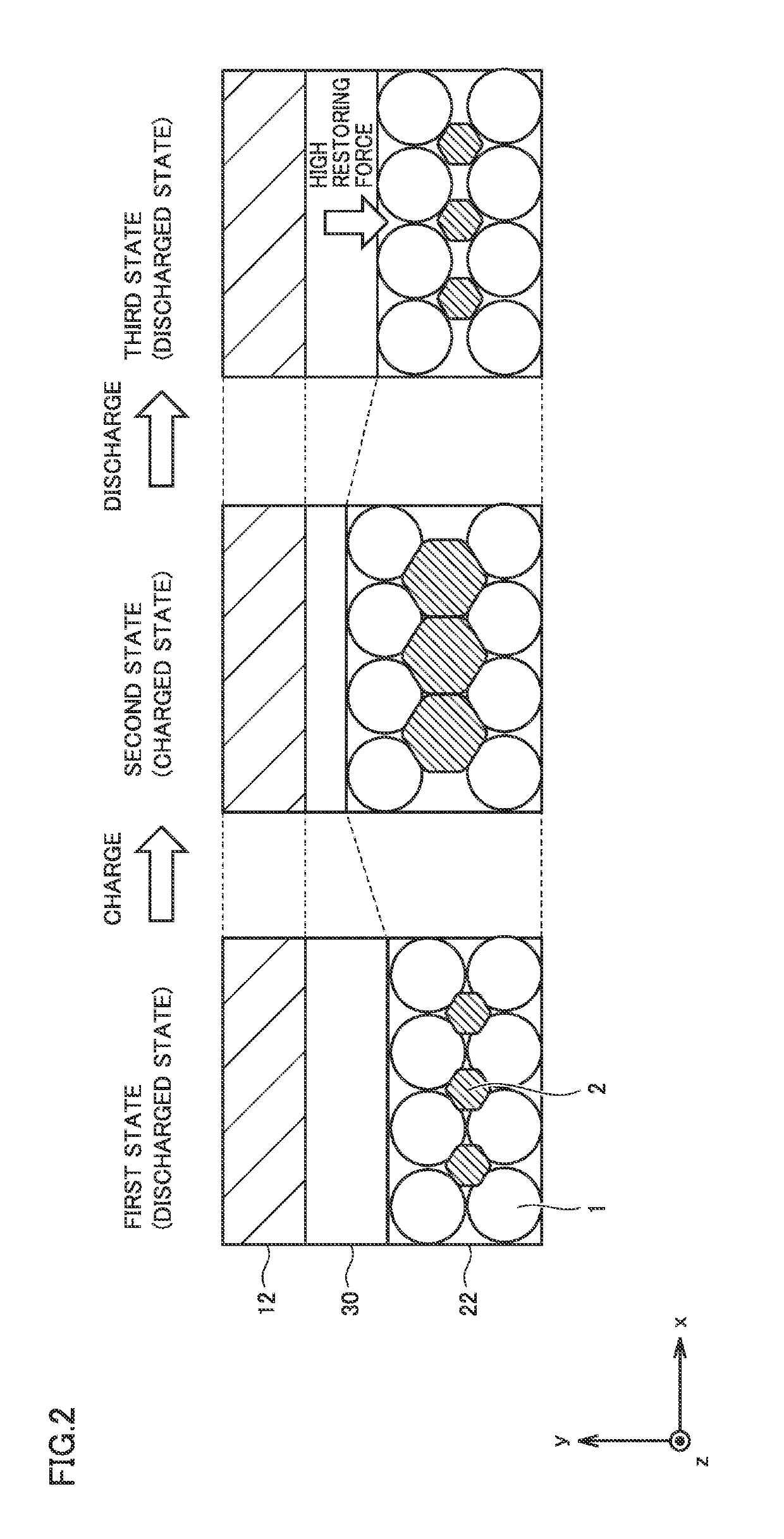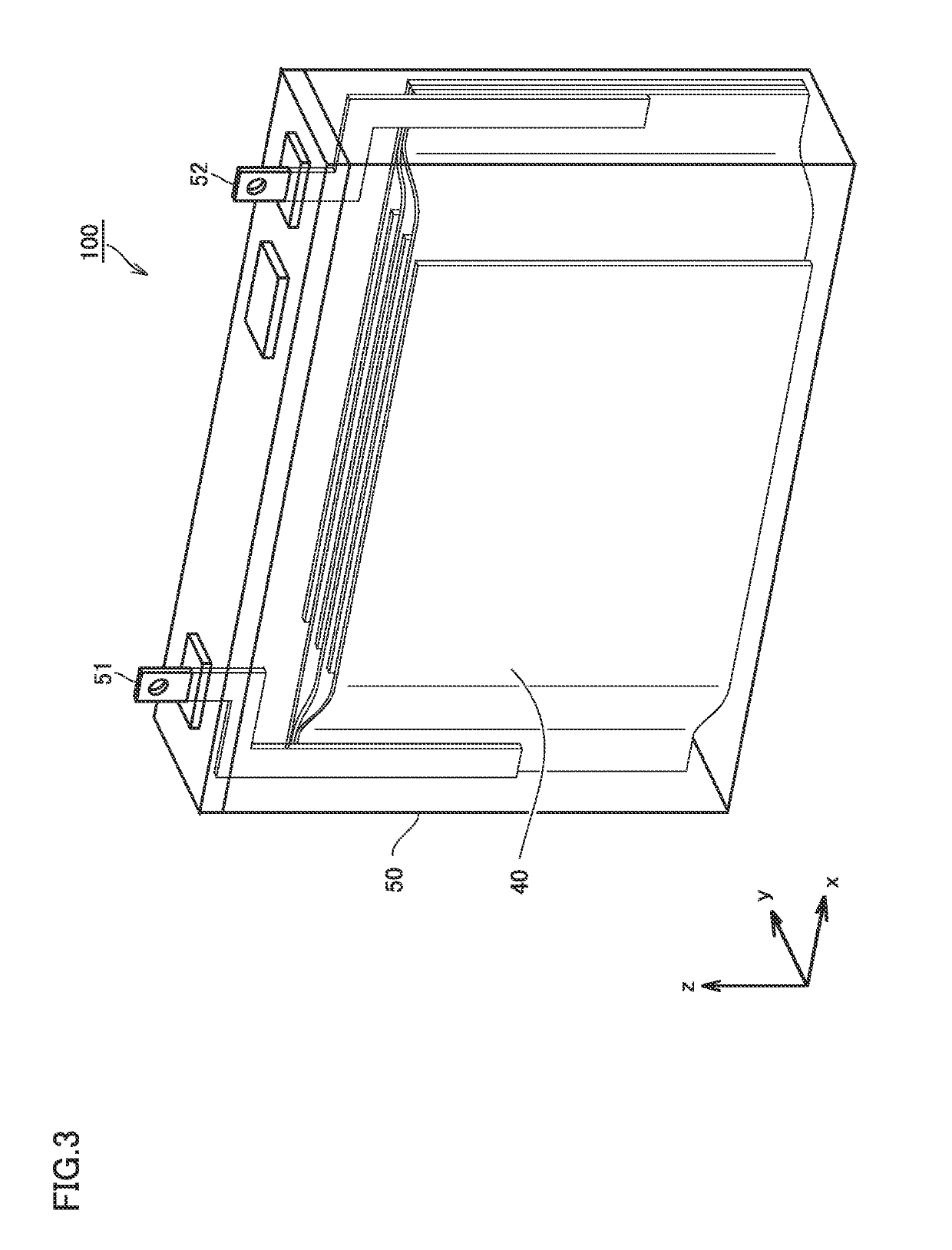Non-aqueous eletrolyte secondary battery
- Summary
- Abstract
- Description
- Claims
- Application Information
AI Technical Summary
Benefits of technology
Problems solved by technology
Method used
Image
Examples
example 1
[0096]1. Production of Positive Electrode
[0097]The following materials were prepared.
[0098]Positive electrode active material: LiNi0.82Co0.15Al0.03O2 (D50=10 μm)
[0099]Conductive Material: AB
[0100]Binder: PVdF
[0101]Positive electrode current collector 11: Al foil (thickness=15 μm)
[0102]Solvent: N-methyl-2-pyrrolidone (NMP)
[0103]The positive electrode active material, the conductive material, the binder, and the solvent were mixed to prepare slurry. The mixing ratio of the solid contents was “(positive electrode active material) / (conductive material) / binder=95 / 2 / 3 (mass ratio)”. The resulting slurry was applied to the surface (both sides) of positive electrode current collector 11 and then dried to form positive electrode active material layer 12. Positive electrode active material layer 12 was compressed. Positive electrode active material layer 12 after compression had a density of 3.4 g / cm3. Thus, positive electrode 10 was produced.
[0104]2. Production of Negative Electrode
[0105]The...
examples 2 to 5
[0129]Battery 100 was produced in the same manner as in Example 1 except that the content of silicon oxide 2 (SiO) was changed as specified in Table 1 below.
examples 6 and 7
[0130]Battery 100 was produced in the same manner as in Example 5 except that the density of negative electrode active material layer 22 was changed as specified in Table 1 below.
PUM
 Login to View More
Login to View More Abstract
Description
Claims
Application Information
 Login to View More
Login to View More - R&D
- Intellectual Property
- Life Sciences
- Materials
- Tech Scout
- Unparalleled Data Quality
- Higher Quality Content
- 60% Fewer Hallucinations
Browse by: Latest US Patents, China's latest patents, Technical Efficacy Thesaurus, Application Domain, Technology Topic, Popular Technical Reports.
© 2025 PatSnap. All rights reserved.Legal|Privacy policy|Modern Slavery Act Transparency Statement|Sitemap|About US| Contact US: help@patsnap.com



